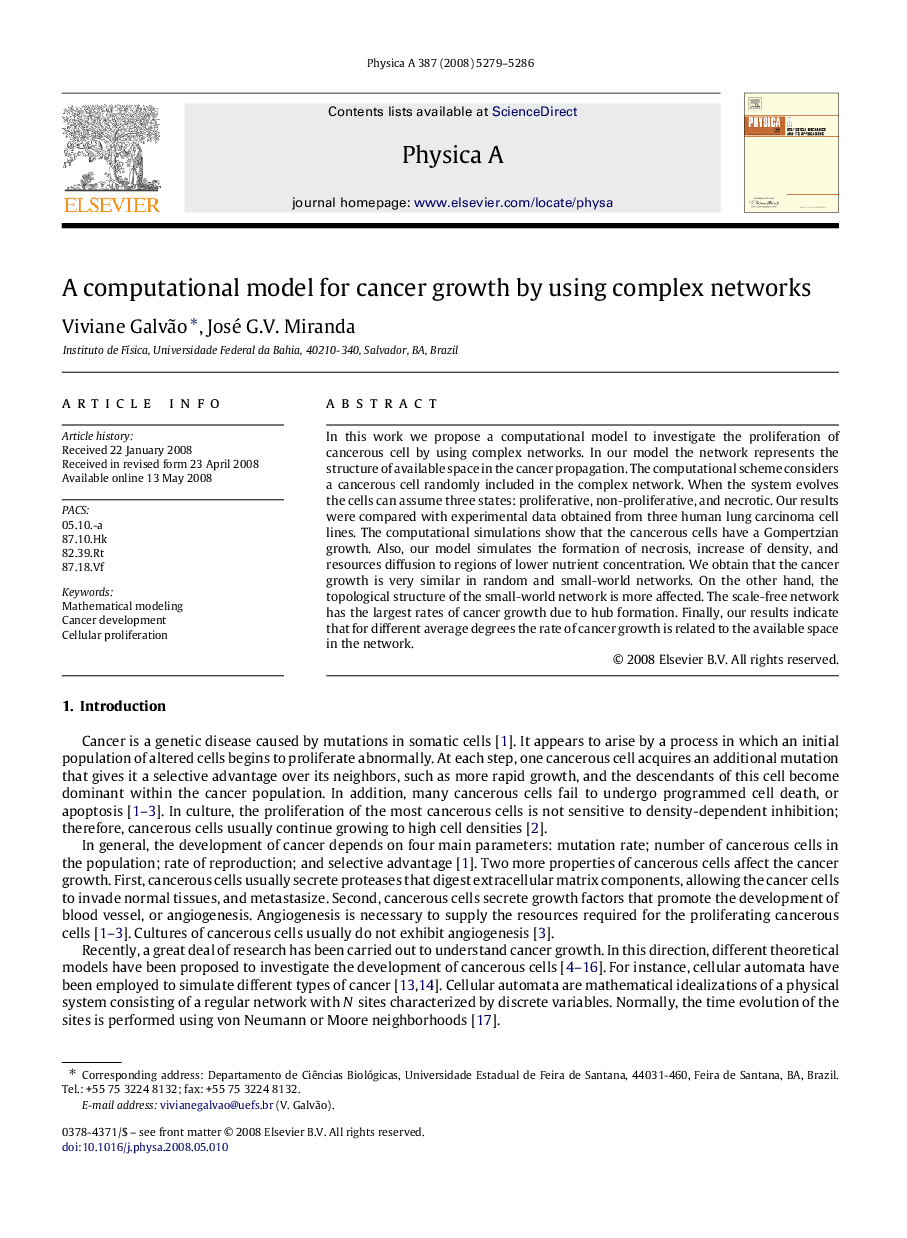| Article ID | Journal | Published Year | Pages | File Type |
|---|---|---|---|---|
| 977920 | Physica A: Statistical Mechanics and its Applications | 2008 | 8 Pages |
In this work we propose a computational model to investigate the proliferation of cancerous cell by using complex networks. In our model the network represents the structure of available space in the cancer propagation. The computational scheme considers a cancerous cell randomly included in the complex network. When the system evolves the cells can assume three states: proliferative, non-proliferative, and necrotic. Our results were compared with experimental data obtained from three human lung carcinoma cell lines. The computational simulations show that the cancerous cells have a Gompertzian growth. Also, our model simulates the formation of necrosis, increase of density, and resources diffusion to regions of lower nutrient concentration. We obtain that the cancer growth is very similar in random and small-world networks. On the other hand, the topological structure of the small-world network is more affected. The scale-free network has the largest rates of cancer growth due to hub formation. Finally, our results indicate that for different average degrees the rate of cancer growth is related to the available space in the network.
